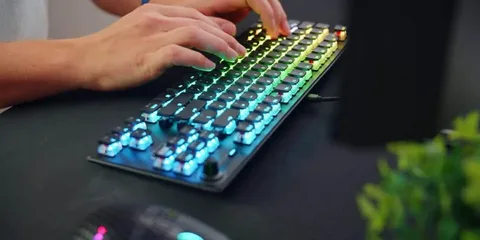In the world of competitive gaming, every millisecond counts. The precision and speed with which a gamer’s keyboard responds can often be the difference between victory and defeat. Understanding the science behind gaming keyboard response times is essential for both gamers and developers looking to optimize performance.
What Are Keyboard Response Times?
Keyboard response time, often measured in milliseconds (ms), refers to the delay between pressing a key and the corresponding action registering in the computer. In gaming, a lower response time means faster input recognition, allowing players to execute commands more swiftly and accurately.
The Technology Driving Faster Response Times
Gaming keyboards utilize several technological innovations to reduce lag and improve responsiveness:
Mechanical Switches
Unlike traditional membrane keyboards, gaming keyboards often use mechanical switches. These switches provide tactile feedback and register key presses faster due to their physical design. Mechanical switches like Cherry MX or optical switches reduce debounce time—the brief delay needed to confirm a keystroke—thereby improving response time.
Polling Rate and Scan Rate
The polling rate is the frequency at which the keyboard reports its status to the computer, measured in Hertz (Hz). A higher polling rate, such as 1000 Hz, means the keyboard updates the computer 1000 times per second. This results in quicker recognition of keystrokes.
Scan rate, on the other hand, refers to how often the keyboard internally checks which keys are pressed. Improving scan rate reduces input delay, contributing significantly to faster response times.
Key Rollover and Anti-Ghosting
Gaming keyboards are designed to register multiple simultaneous key presses without “ghosting,” where unintended keys appear. N-key rollover ensures each key press is detected independently, crucial for fast-paced gaming.
Why Response Time Matters in Gaming
When discussing the science behind gaming keyboard response times, it is important to recognize how even minimal delays can affect gameplay. For example, in first-person shooters (FPS) or real-time strategy (RTS) games, faster response times mean quicker reactions, more precise controls, and ultimately, a competitive edge.
Measuring and Improving Keyboard Response Times
Gamers often look for keyboards with response times below 10 ms. Professional-grade gaming keyboards boast response times as low as 1 ms, achieved through a combination of hardware and software optimizations.
Players can also improve response time by:
- Using high-quality USB ports (preferably USB 3.0)
- Avoiding wireless keyboards for competitive gaming due to potential latency
- Keeping drivers and firmware up to date
Conclusion
Understanding the science behind gaming keyboard response times helps gamers appreciate the complexity involved in optimizing their hardware for peak performance. From mechanical switches to polling rates and key rollover technologies, every component plays a vital role in minimizing delay and enhancing the gaming experience. As gaming continues to evolve, so too will the innovations aimed at reducing response times and giving players the edge they need.


